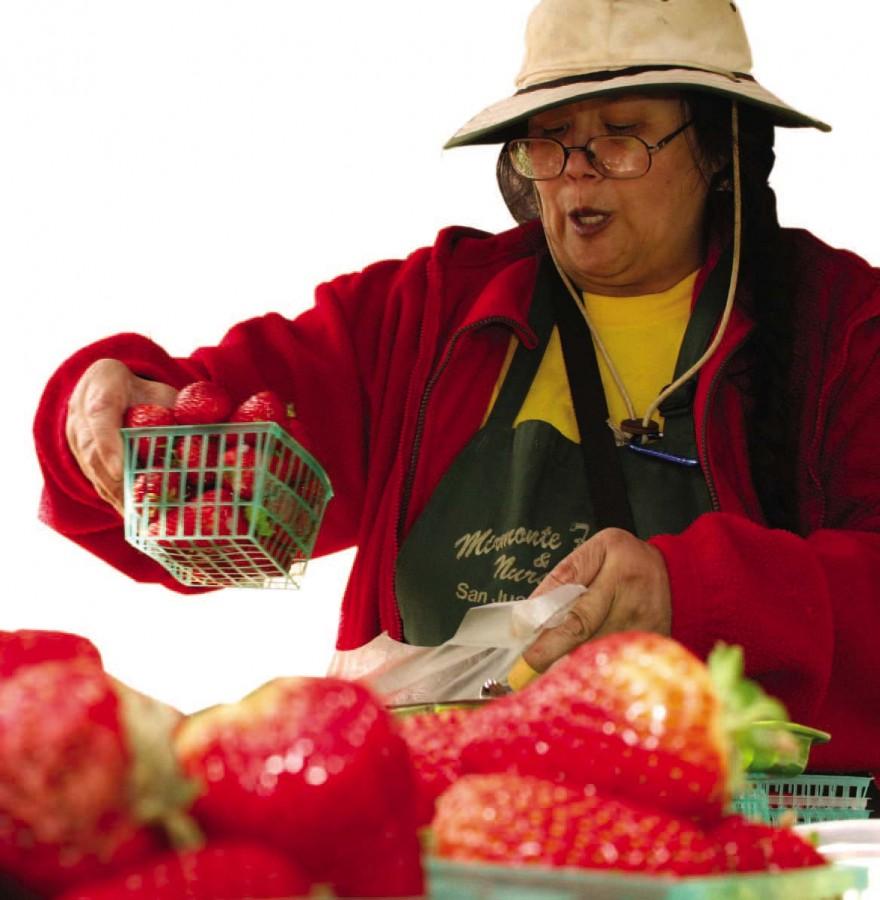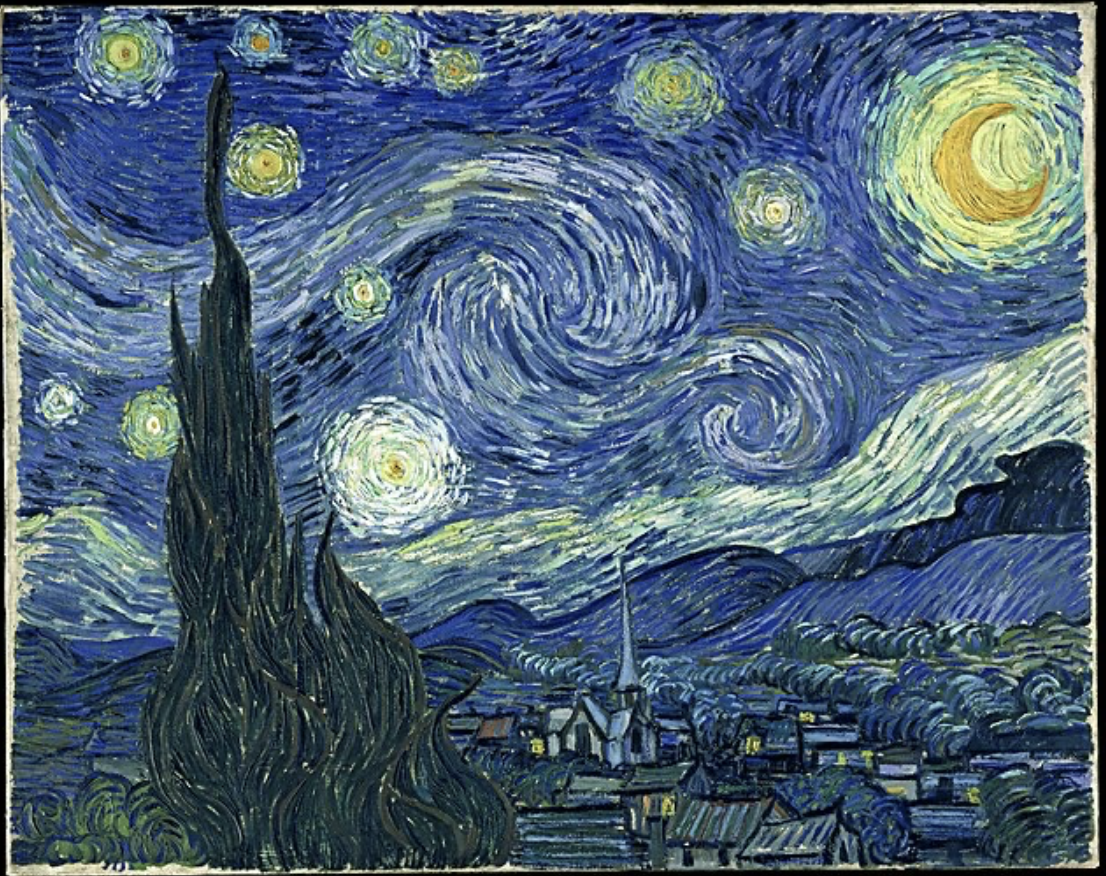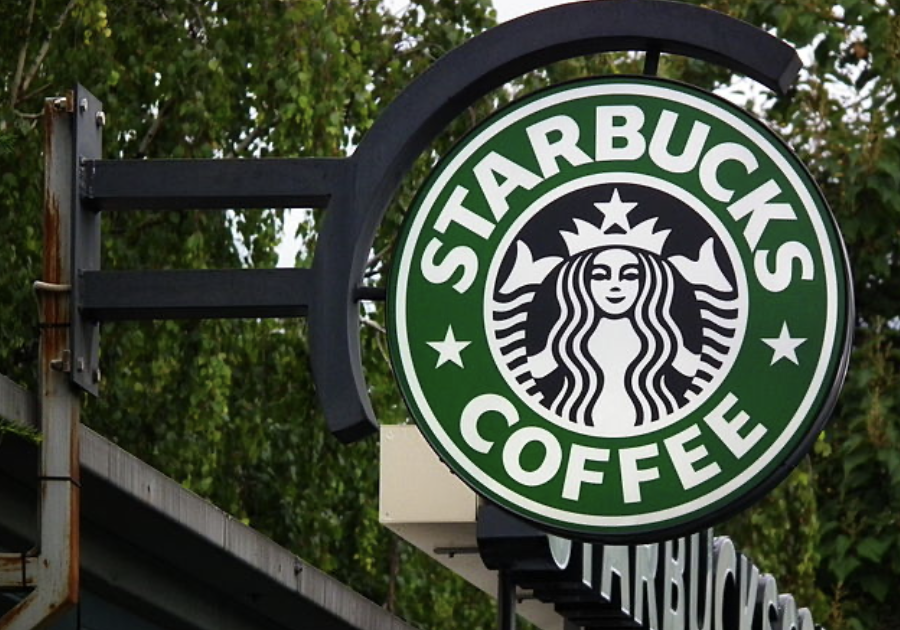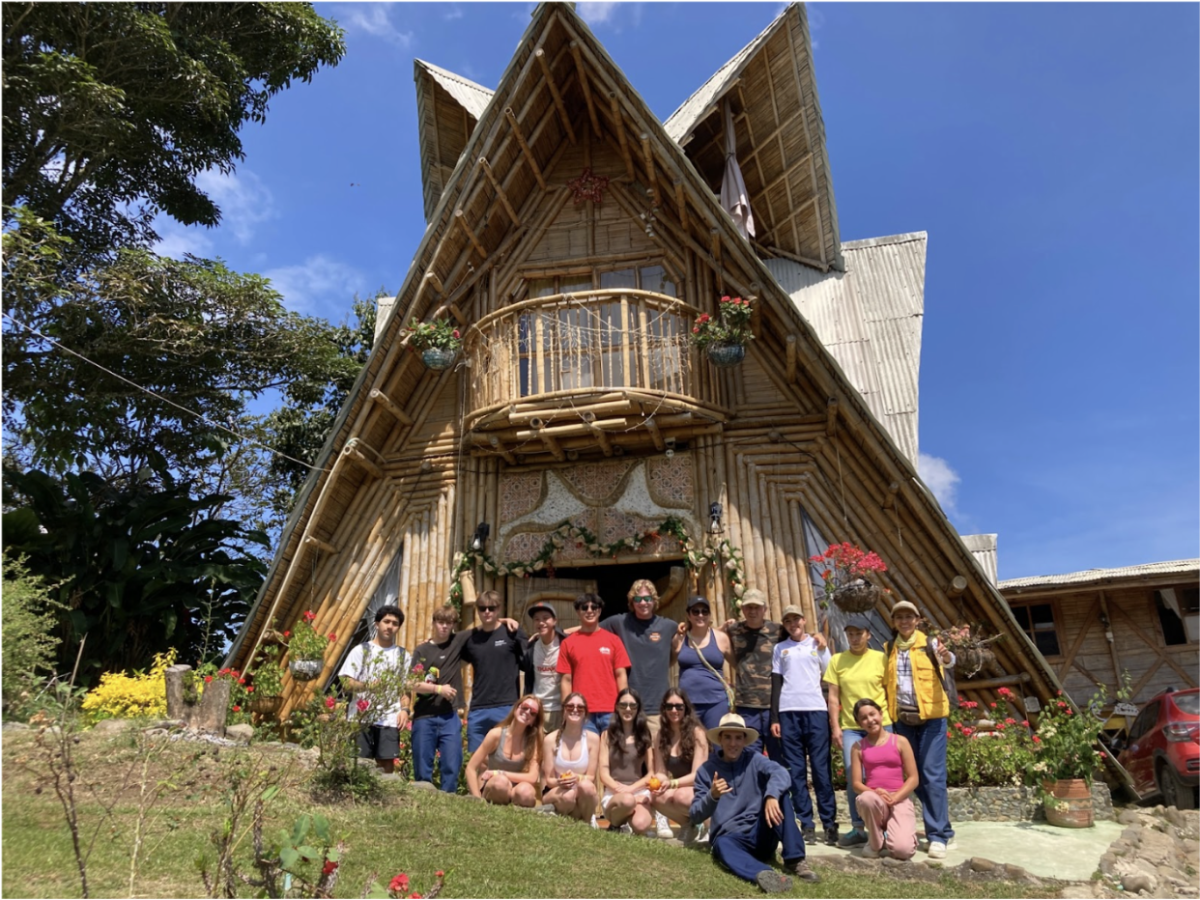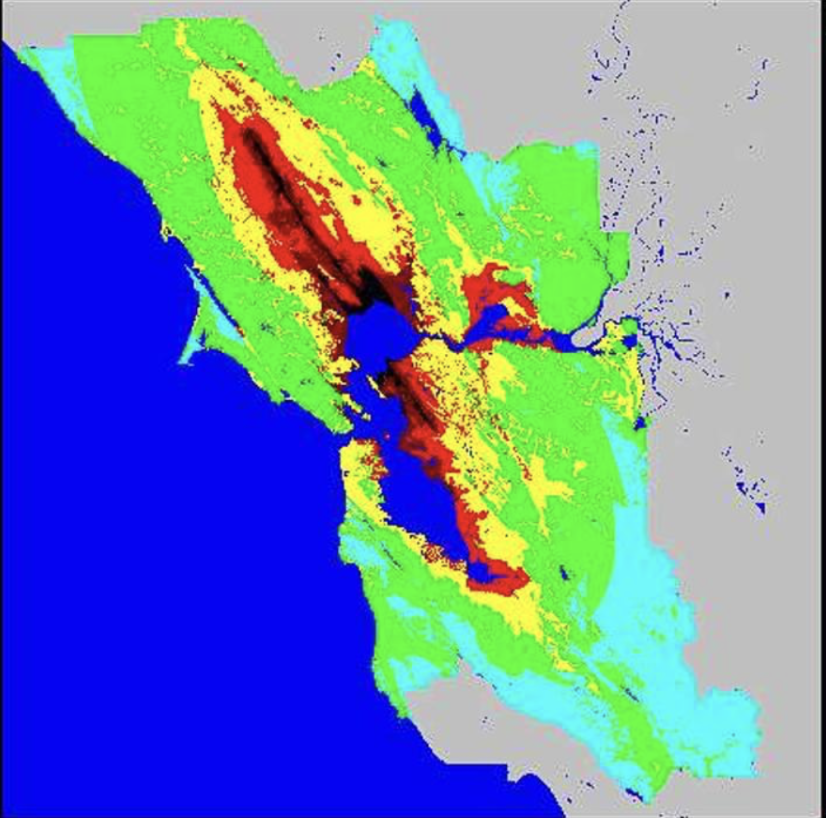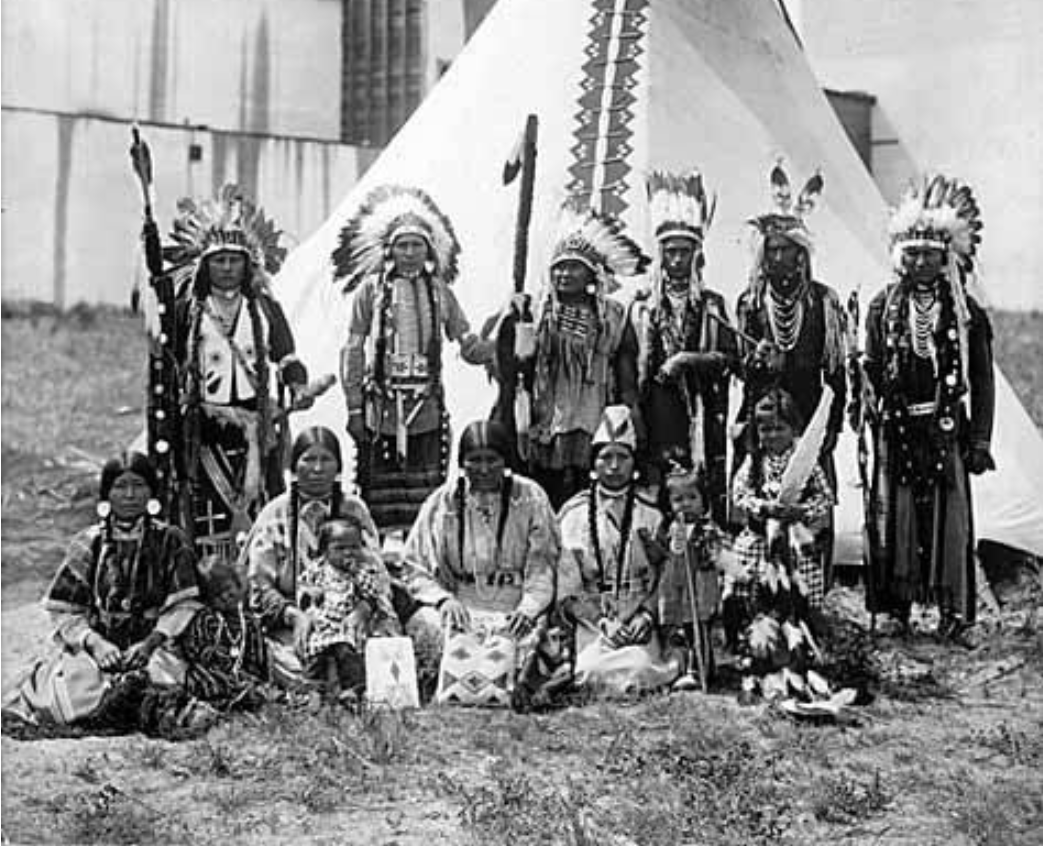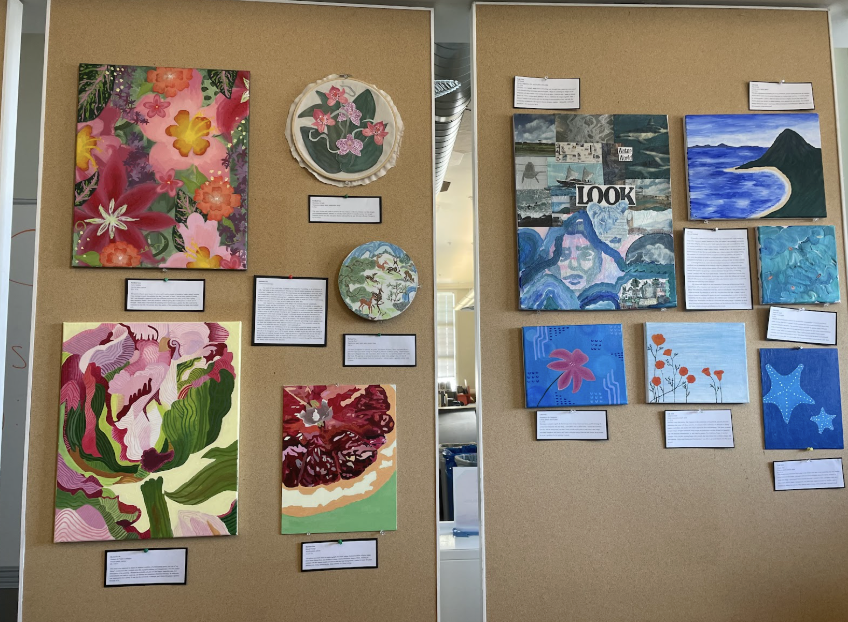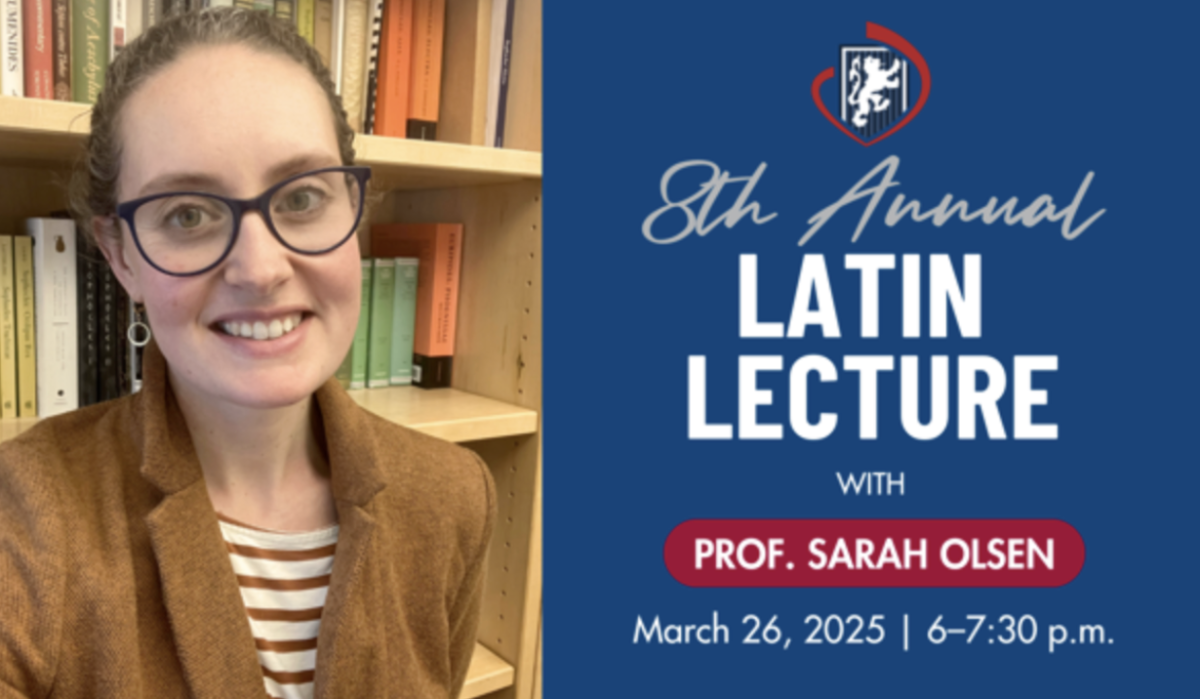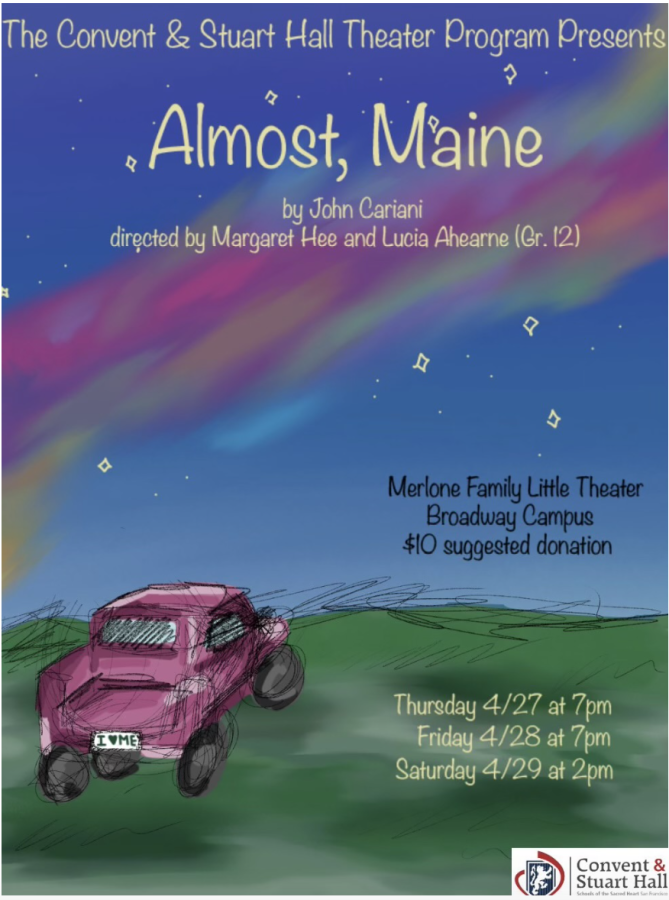Jovel Queirolo
Managing Editor
Right off 280 the freeway on Alemany Boulevard is a converted parking lot with two city-block long rows of mural-covered concrete stalls where every Saturday morning, the stalls fill with boxes and crates of fruits, vegetables, eggs, honey and whatever else local farmers bring to sell. A slight breeze delivers a waft of steaming tamales, curries or crêpes from a cluster of food vendors preparing dishes as diverse as the crowds that come to eat and shop.
The large mass of cars and people concentrated along the stalls at the Alemany Farmers Market — the biggest market in San Francisco and the oldest in California, founded in 1943 — is visible from the freeway. Zoom in, and the Tupperware bowls filled with sliced oranges are a more common sight at San Francisco’s other farmers markets that serve as links between the city’s residents and rural California farmers.
“You want to know where your food comes from,” said John Garrone, an organically cultivated specialty mushroom grower from Moss Landing. “Regardless of the whole organic debate, shopping at a farmers market supports local farmers, and at a market like Alemany you can get high quality produce for cheap.”
During World War II, the Victory Garden Council and regional farmers initially established San Francisco’s first farmers market at Duboce Avenue and Market Street as a wartime measure to provide an outlet for local growers and surplus crops from neighboring counties. In 1947, the market moved to its present location and has continuously supported the small, family farmers of California.

“My parents were one of the first families to do business with Alemany even when the market was still at the old location,” said Garrone, while sorting through a box full of brownish, wrinkly chanterelle mushrooms. “I’ve been coming here ever since I can remember. I spent almost every Saturday in the summer here as a teenager.”
The fresh produce found at farmers markets around the city is grown and shipped in from all over Central California. One can find thick, long sugarcane from Fresno, monstrous ginger from Merced, to garlic from Gilroy at Alemany. Some markets offer unusual or ethnic ingredients depending on both farmers and buyers.
“The markets are affected by the waves of immigrants,” said Garrone. “Sellers are mostly the largest group of immigrants. Buyers are usually whoever are in the surrounding neighborhoods, and may reflect the majority immigrant group. Sixty years ago, buyers and sellers were all Italian-American. During the wave of Asian immigration, you saw more Asian ingredients and Asian buyers. You saw a similar pattern with the Mexican immigrants.”
In recent years, Alemany — organized by the Real Estate Division of the city and maintained by the small fees the farmers pay — has retained its popularity while a number of smaller markets have popped up in various neighborhoods run by nongovernmental organizations (NGOs) and groups of farmers.
A smaller market in the Stonestown Galleria parking lot outside Macy’s began operating on Sunday mornings this past June. Although its tents and tables cannot compare to the colorful stalls of Alemany, the Stonestown Farmers Market offers a jumpy house for kids and concessions other than non-prepared food including authentic Belgian waffles, jewelry, hats and art.
“We’ve had lots of requests for markets in city neighborhoods, and thought Stonestown would be a good central location for people of different communities to come together,” said Market Manager Tyler Thayer, who used to run the Ferry Plaza Farmers Market. “We can’t guarantee a market for every district, farmers being stretched too thin with only 2900 farmers working 500 markets in California.”
Thayer’s young market, sponsored by the Marin Agricultural Insitute, and the 18-year-old Ferry Plaza Farmers Market, run by non-profit Center for Urban Education about Sustainable Agriculture (CUESA), are more expensive and smaller in size than Alemany, but offer the same connection between buyer and consumer.
“I’ve gone to the Ferry Plaza market since I was little,” said sophomore Natalie Sullivan. “I went every weekend with my parents and godparents, and we still go as often as we can. Everything is fresh, and you can try samples of things that [farmers] have grown themselves. I usually buy food, fresh sunflowers and lavender.”
Thayer says shopping at a farmers market is more beneficial to a consumer than shopping at a supermarket as farmers markets offer a chance for people of all ages to explore food and culture while protecting both producer and consumer. Over at Alemany, beekeeper Jan C. Synders, who has sold honey at the market for 40 years, explains to a customer how to eat harvested bright-yellow pollen. At his market, a gray-haired musician fingers classical tunes on an acoustic guitar.
“People come to farmers markets with friends and family to socialize,” said Thayer. “But California farmland is disappearing since much of the produce in grocery stores is foreign. People need to know that local food has better flavor and higher nutritional value, puts money directly in a farmer’s pocket and reduces environmental damage with a shortened commute for food.”
The “buy fresh, buy local” ethic has come back for consumers concerned with climate change, rising food prices and diet-related health problems. Garrone says farmers markets fit those needs while providing a weekend hangout reflecting the character of the city. At the city’s first market, one can stop for a pupusa from Estrellita’s between a flatbread pizza stall and the Hummus Guy listening to a woman who plays a dull saw while manipulating the jazzy dance of her homemade pink tap dancing cat.
“My family has been here forever and I love this market and the diversity of the people who come here,” said Garrone. “I’ve watched this market grow and change. I’ve watched kids grow up and come back with their kids to shop for our mushrooms. The farmers market represents everything good about food connecting people.”



